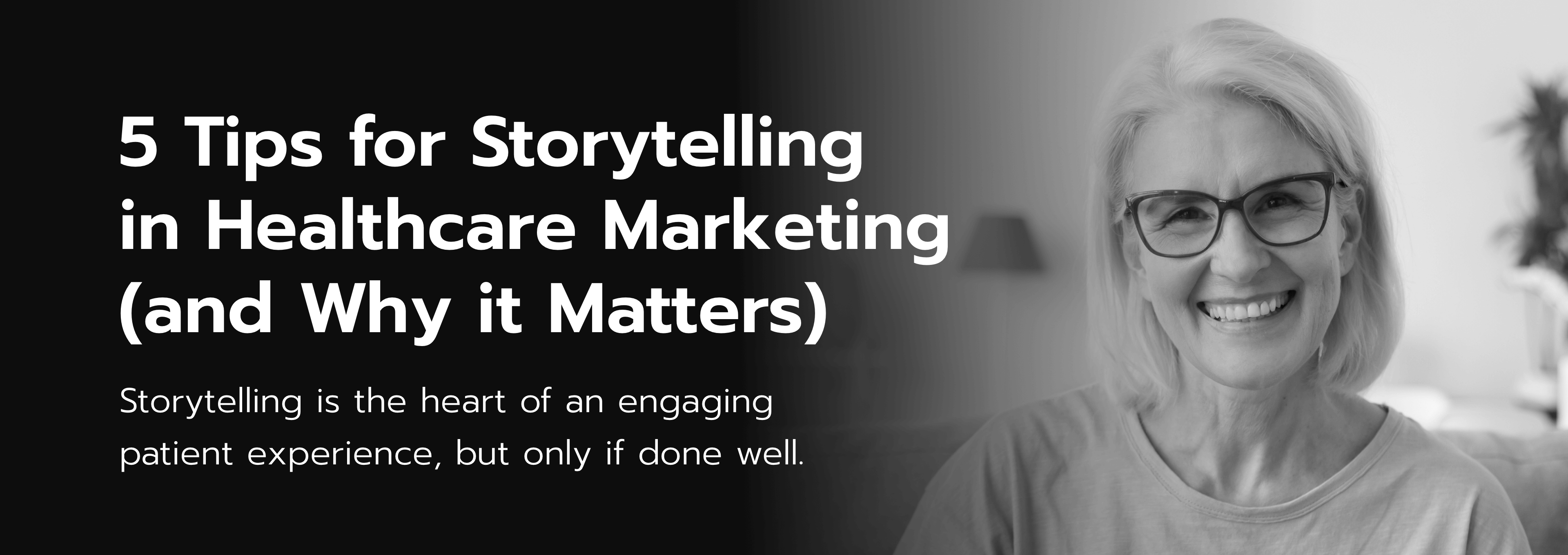
Customer experiences are not just about wait times and provider availability. While these aspects do play a role, patients also care about how a healthcare organization makes them feel. When they have positive experiences and feel connected, their engagement increases.
Enter: Storytelling. Effective storytelling can have a big impact on patient engagement by instilling trust and creating an emotional connection. All organizations have a story to tell. However, many do not tell the right story or struggle to keep their story consistent throughout the entire patient experience.
Sharing the right story at the right time may just be the missing piece in your patient experience.
Consider these five tips to improve storytelling (and boost engagement) at your organization.
 1. Mine Your Patients Stories
1. Mine Your Patients Stories
Patient testimonials are unrivaled in authentic, engaging storytelling. They provide social proof and create an emotional connection between the audience and the patient — which is then translated to your healthcare brand.
However, many people are unwilling to share their personal health experience(s) with a public audience. This is when you should lean on the message rather than a specific person. Look at case studies, testimonials, and patient reviews. What stands out? Is it a transformational treatment, excellent care from providers, or knowledge and transparency? Capture these real sentiments and use them to tell a story in your marketing messages.
2. Use Intentional Emotional Appeals
Emotion is a powerful tool for storytelling. Emotional content impacts audience perception and drives real conversion (nearly 2x more than rational content). The data shows that “emotional campaigns are more effective on almost all business metrics, especially long-term.”
Keep in mind that healthcare can draw out emotions and strike a deep chord with an audience. It is important to distinguish between pulling heartstrings and being emotionally manipulative. When emotional content fails its intent, it can alienate the audience. Strive to elicit emotions that make people feel seen and hopeful. Be intentional with why and how you tell a story.
3. Enhance Patient Journeys with Multimedia

Using different mediums to tell stories throughout the patient journey is a winning formula for crafting a well-rounded experience.
Offering diverse media types and formats, such as how-to videos, podcasts, and interactive graphics, will enhance engagement and accessibility. Incorporating visuals, audio, and interactive elements caters to varied preferences and learning styles, creating a more immersive and inclusive narrative. This multi-sensory approach not only captivates a broader audience but also deepens the emotional connection between the audience and the story, fostering a richer and more memorable experience.
4. Take an Authentic Approach
Accentuate genuine and noteworthy aspects of your brand. Don’t just say what you think audiences want to hear. A misleading or misaligned story discredits a brand and hurts patient relationships.
Have a clear understanding of your organization’s strengths and weaknesses. Be transparent and focus on what you know to be positive and authentic. Authenticity establishes a real and relatable connection, resonating with patients on a personal level and fostering loyalty. Transparent storytelling not only humanizes the brand but also distinguishes it in a saturated market, creating a lasting impression based on sincerity and integrity.
5. Be Consistent
Consistency is key to good storytelling. This means aligning all healthcare materials and experiences with the stories you tell throughout the entire patient experience.
For example, if you convey that your organization places high value on their patient’s time and trust, your patient experience should support this claim. For example, patient portals should be efficient and intuitive to demonstrate that value.
Conclusion
As healthcare marketing efforts evolve, storytelling that is genuine, intentional, and patient-centered will stand the test of time. Use these tips to strengthen your stories, enhance your patient experiences, boost engagement and get real results.